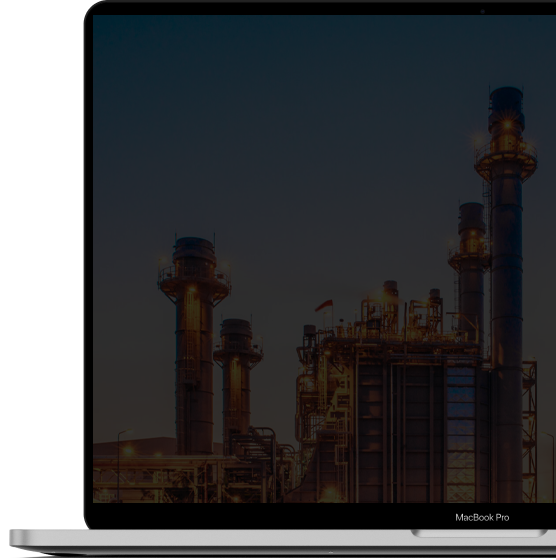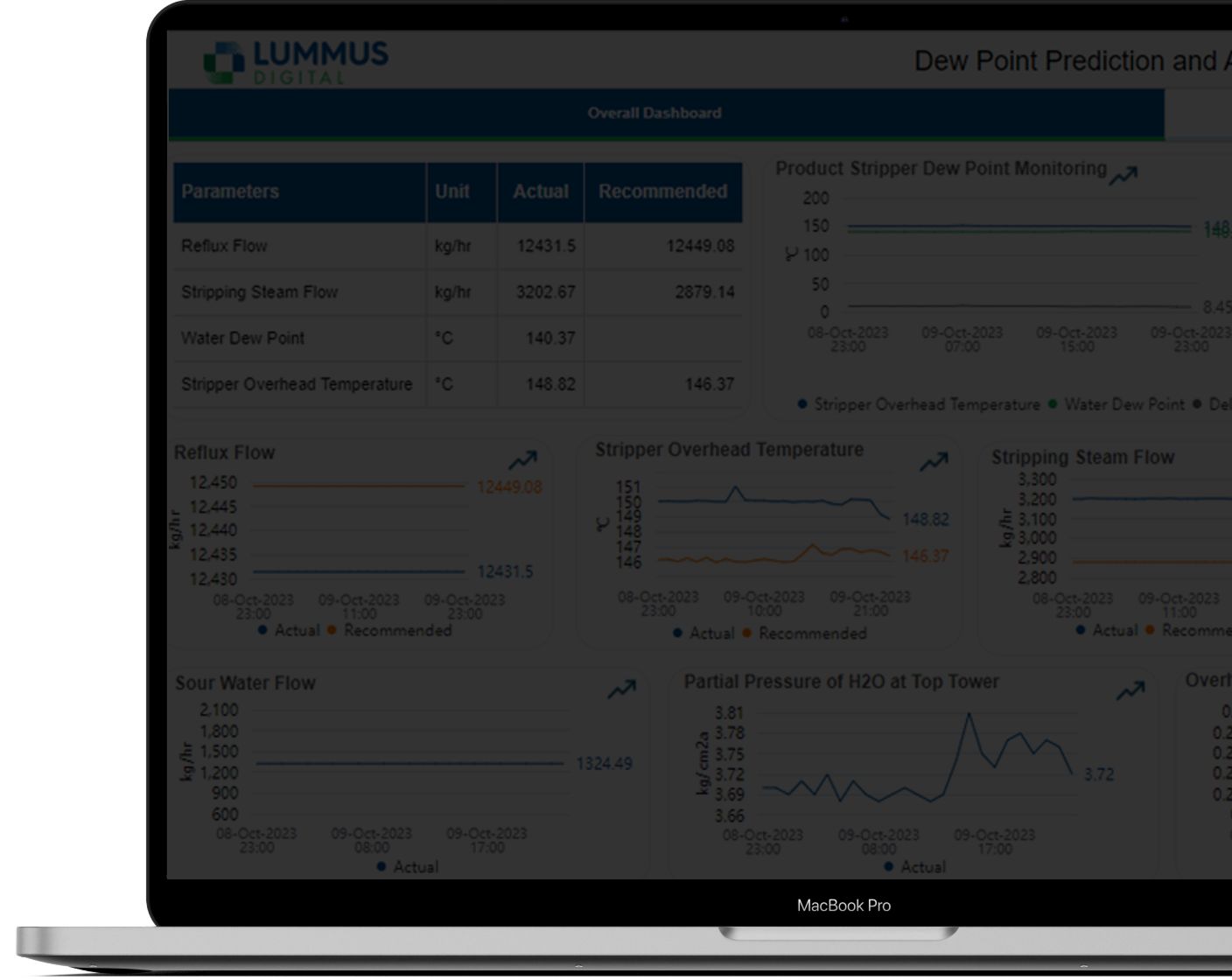- Company
- Products
Petrochemicals
Refining
Sustainability
- Napcon AI
- Our Platform
- Hybrid Process Modelling
- Resources
Dew Point Monitoring
and Advisor
Optimize Refinery Performance. Enhance Quality. Minimize Environmental Risks.
Product Introduction:
Product Stripper dew point issues in refineries can create significant operational hurdles, including off-spec products, hydrocarbon condensation, and decreased throughput. These challenges lead to inefficiencies in separation processes, adversely affecting product quality and escalating reprocessing costs.
To mitigate these issues, operators often increase reboiler heat, resulting in higher energy consumption and diminished plant efficiency.
Additionally, dew point mismanagement can lead to equipment fouling, corrosion, and potential damage to downstream compressors from liquid carryover. This not only drives up maintenance costs and unplanned downtime but also introduces environmental and safety risks associated with venting or flaring.
By addressing dew point management effectively, refineries can enhance performance, reduce costs, and maximize profitability.
Watch Demo

Dew Point Prediction and Advisor
20%
Reduction in Maintenance Costs
30%
Reduction in Unscheduled Unit Shutdowns
25%
Increase in Equipment Lifespan
Hybrid Model
A hybrid model combines first-principles approaches with machine learning techniques to optimize dew point management in hydroprocessing strippers. The first-principles component employs physical laws to accurately determine dew point conditions and understand the operational dynamics of steam condensation.
Meanwhile, the machine learning model leverages historical data and real-time inputs to adaptively predict optimal reflux and stripping steam flow values.
This synergy allows for improved accuracy in forecasting system behavior, effectively managing uncertainties and complex operational scenarios. By integrating these methodologies, the hybrid model enhances the reliability of dew point predictions, ensuring optimal conditions for maintaining “On-spec” product quality.

Transform your Challenges into Opportunities
Pain Point
Steam Condensation Risks and Fouling Problems
Benefit
Real-time monitoring and adjustments enable operators to maintain optimal operating conditions, enhancing process stability, boosting productivity by 10%, and delivering an annual revenue increase of $100,000 alongside total savings of approximately $250,000.
Pain Point
Limited Operational Flexibility and Reduced Product Quality
Benefit
Real-time monitoring and adjustments enable operators to maintain optimal operating conditions, enhancing process stability, boosting productivity by 10%, and delivering an annual revenue increase of $100,000 alongside total savings of approximately $250,000.
Pain Point
Unplanned Shutdowns and Increased Maintenance Frequency
Benefit
Optimize energy usage and enhance the equipment lifespan with actionable recommendations based on AI-driven insights and hybrid model approaches.
Pain Point
Lack of Proactive Management
Benefit
Predictive insights inform maintenance schedules, enabling proactive measures to address potential issues and extend equipment life by 20%, saving a medium-sized industrial plant approximately $150,000 annually based on a $750,000 replacement cost every five years.
Performance Deviation Prediction
Calculate the dew point with precision and suggest the most optimal top temperature settings to prevent steam condensation from occurring during the process.
Key Parameter Monitoring
Complete monitoring of all parameters, including Naphtha flow, off-gas flow, reflux flow, steam flow, top pressure, and top temperature.
Process and Efficiency Trends
Trend plots for
- Dew point
- Overhead temperature
- Top pressure & Partial pressure
- Reflux flow, Off-gas flow, and Naphtha flow
Operational Benchmarking
Comparison plot and table between “Actual” vs. “Recommended “ for
1. Overhead Temperature
2.Reflux Flow
3.Stripping Steam Flow
Actionable Insights for Improvement
Actionable recommendations (based on comparison with current values) on controllable parameters such as reflux flow and stripping steam flow.



